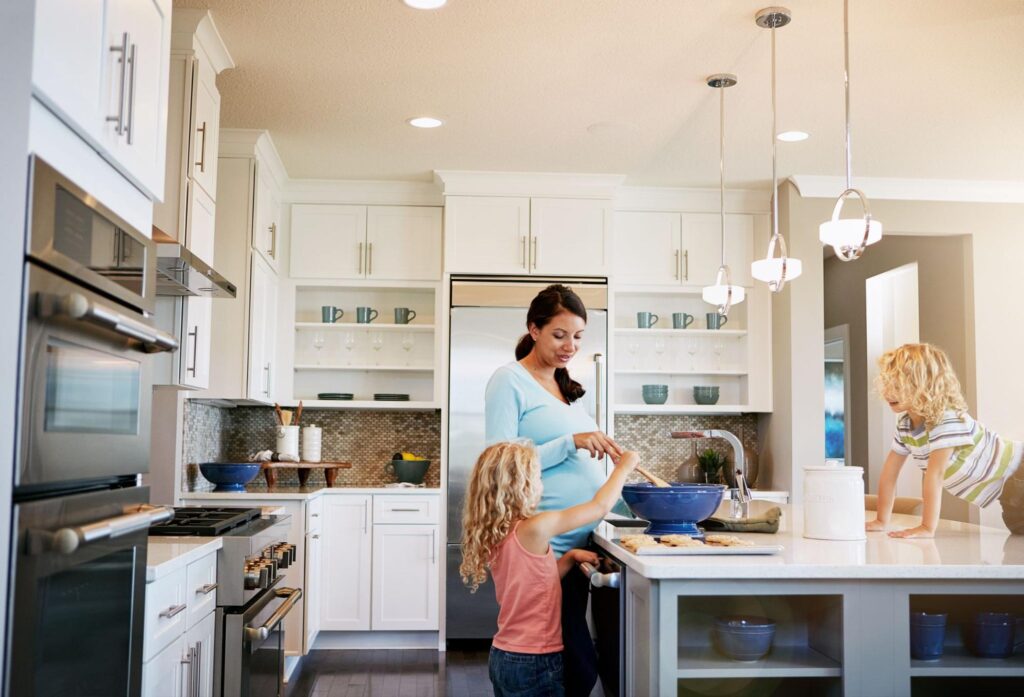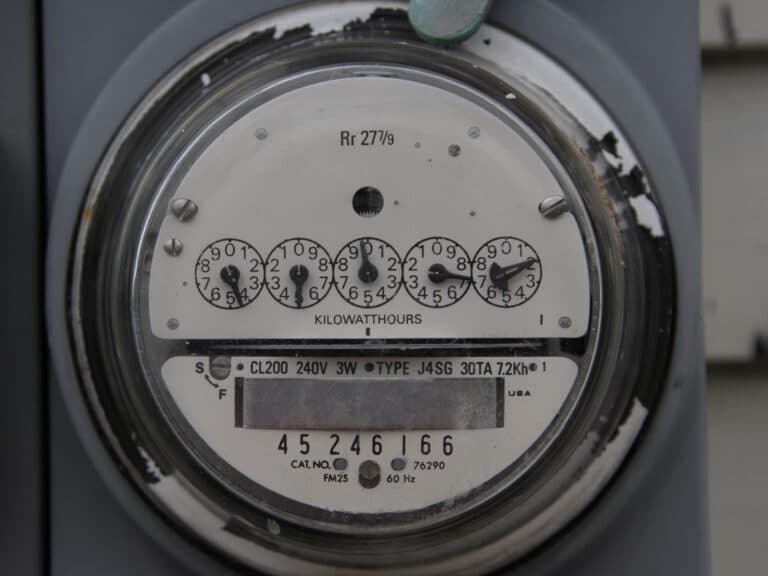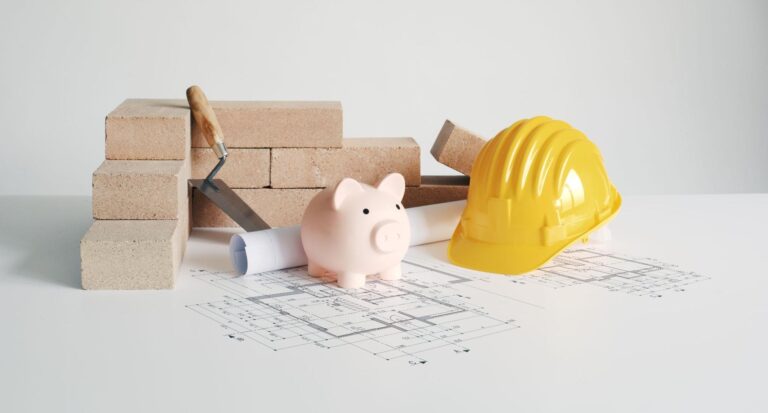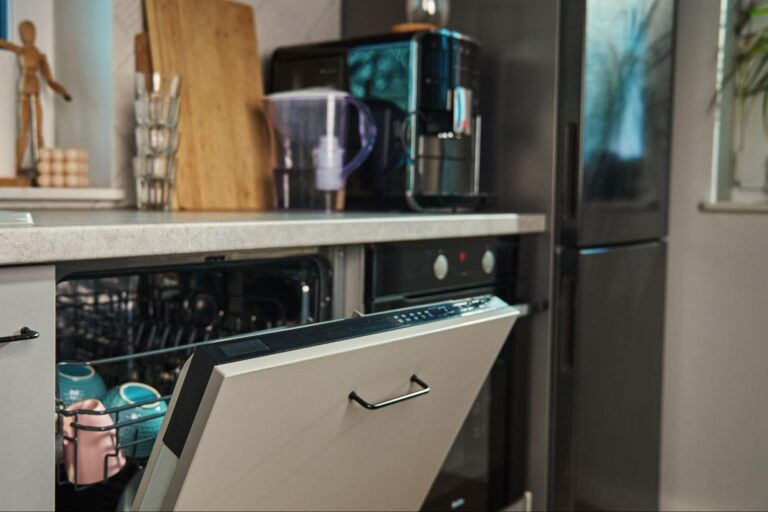In today’s world, energy-efficient homes are more than just a trend—they’re a priority for homeowners seeking enhanced comfort, significant cost savings, increased property value, and a greener lifestyle. By integrating modern design, smart technology, and sustainable materials, these homes can significantly lower utility costs while reducing environmental impact. For Indiana residents, Value Built Homes is committed to designing affordable, site-built homes that are both efficient and accessible.
To help you understand what truly makes a home efficient, we’ll first explore the often-overlooked lifestyle benefits—like improved health and comfort—that go beyond just saving money. Then, we will examine the 14 key features of an efficient home, grouped into five core pillars of design, that guide you from the physical structure to the smart technology inside. Finally, we’ll show you how official certifications can give you confidence in your home’s performance.
Each of these elements plays a crucial role in creating a comfortable, cost-effective, and sustainable living space.
More Than Just Savings: The Hidden Benefits of an Efficient Home
While lower utility bills and increased property value are compelling reasons to choose an energy-efficient home, the day-to-day benefits are just as significant. These homes are engineered as a complete system, leading to a superior living experience:
- Enhanced Comfort: A well-insulated and airtight building envelope means fewer drafts and more consistent indoor temperatures. Rooms stay warmer in the winter and cooler in the summer, eliminating the hot and cold spots common in standard homes.
- Improved Health and Air Quality: Advanced ventilation systems (like ERVs and HRVs) don’t just save energy; they provide a constant supply of fresh, filtered air. This reduces indoor pollutants, allergens, and moisture buildup, creating a healthier environment for your family.
- A Quieter, More Durable Home: The same features that stop air leakage—like superior insulation and high-performance windows—also do an excellent job of blocking outside noise. This creates a quieter, more peaceful sanctuary. Furthermore, a tightly sealed envelope better protects the home’s structure from moisture and pests, contributing to long-term durability.
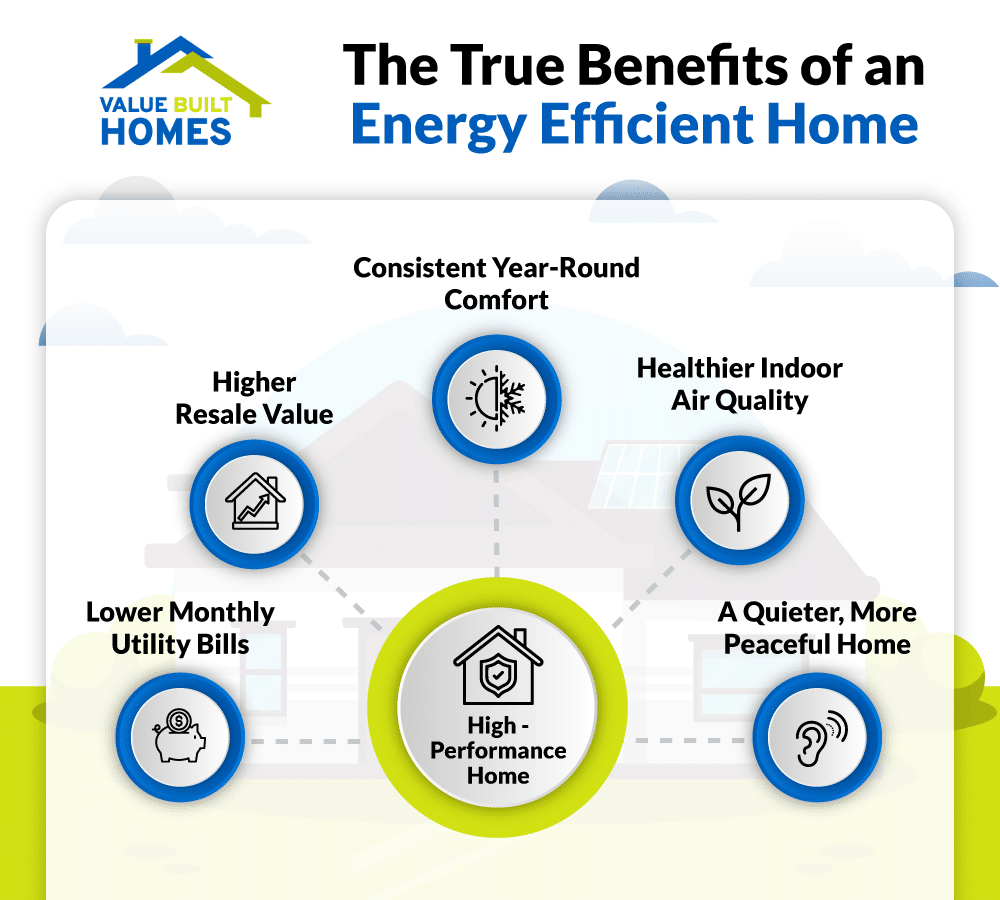
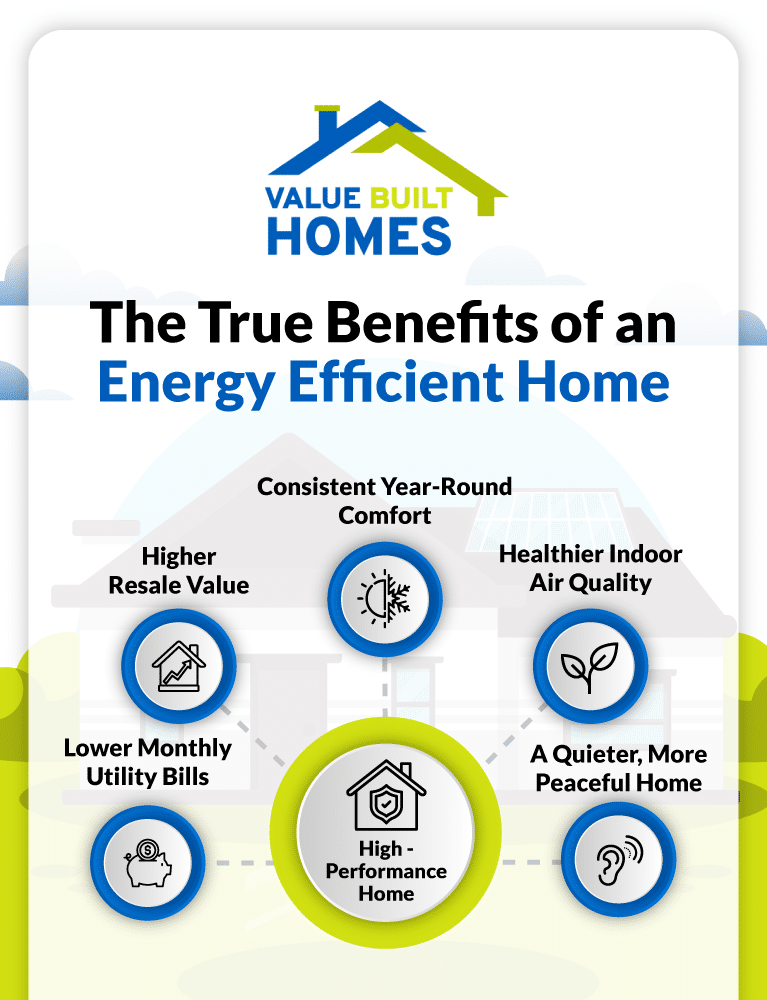
Pillar 1: The High-Performance Building Envelope
It’s important to understand where to focus your efforts. The single most impactful area is the building envelope—the physical shell that separates the inside from the outside. Creating a well-insulated, airtight envelope is the foundation upon which all other efficiencies are built. Its primary job is to create a stable, comfortable indoor environment by controlling the flow of heat, air, and moisture. Get this right, and every other feature will perform better.
1. Superior Insulation and Air Sealing
Insulation is pivotal in maintaining indoor temperatures. A continuous layer of insulation using materials like fiberglass batts, spray foam, or rigid foam boards prevents “thermal bridging” and minimizes heat transfer. Just as important is creating a tightly sealed building envelope by sealing common leak points like window frames, joints, and thresholds. This ensures your HVAC system operates efficiently and enhances indoor air quality.
2. Advanced Window and Door Technologies
Modern windows and doors are engineered to minimize energy loss. Energy-efficient windows, such as double or triple-pane glass with low-emissivity (Low-E) coatings, reduce heat transfer while allowing in natural light. Similarly, insulated doors with proper weather stripping prevent costly air leaks, leading to reduced energy bills and enhanced indoor comfort.
3. Cool and Reflective Exterior Surfaces
A home’s exterior finishes can significantly reduce its cooling load. “Cool roofs” use reflective shingles or specialized coatings to reflect more sunlight and absorb less heat. Applying the same principle to siding with light-colored or reflective finishes helps keep the entire home cooler in hot weather, decreasing reliance on air conditioning.
Pillar 2: High-Efficiency Mechanical & Water Systems
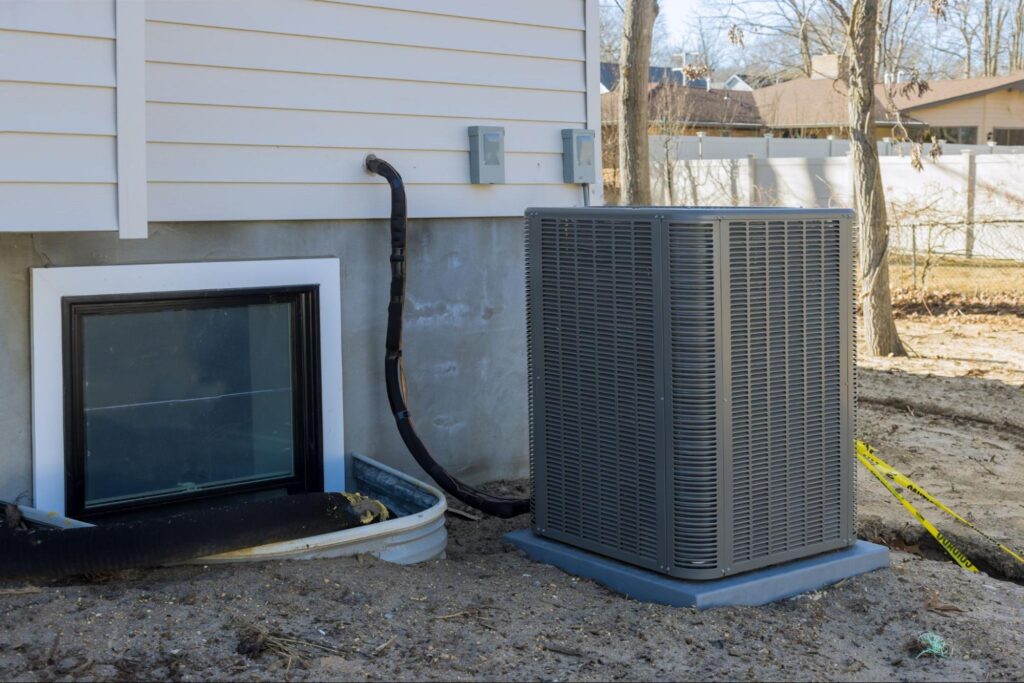
These are the active systems that heat, cool, and provide hot water. Modern mechanical systems are designed to deliver superior performance while consuming minimal energy.
4. Energy-Efficient HVAC Systems
High-efficiency furnaces, air conditioners, and heat pumps are the heart of a comfortable home. When paired with smart thermostats that learn your schedule, these systems deliver precise heating and cooling only when needed. Proper system sizing and regular maintenance are essential to maintain optimal performance and extend equipment lifespan.
5. Advanced Ventilation for Air Quality
As homes become more airtight, proper ventilation is crucial. Advanced systems like Energy Recovery Ventilators (ERVs) and Heat Recovery Ventilators (HRVs) exchange stale indoor air with fresh outdoor air without losing precious heating or cooling energy, ensuring a healthy and efficient living environment.
6. Efficient Water Heating & Fixtures
Water heating is a major energy expense. Tankless water heaters, solar-assisted systems, or hybrid heat pump water heaters are far more efficient than traditional storage tanks. When combined with water-efficient fixtures like low-flow showerheads and dual-flush toilets, you reduce both energy and water consumption simultaneously.
7. Radiant Floor Heating
This innovative approach uses tubes beneath the flooring to deliver consistent heat from the ground up. Radiant heating provides a comfortable, even warmth that can reduce energy waste and decrease reliance on traditional forced-air systems, especially in colder climates.
Pillar 3: Smart Design and Site Orientation
A home’s design and its placement on the land can dramatically impact energy consumption by harnessing natural resources like sunlight and shade.
8. Strategic Site and Building Design
Orienting a home to maximize heat gain in the winter and minimize it in the summer can substantially lower energy costs. Thoughtful window placement is key: in colder climates, placing more windows on the south-facing side harnesses passive solar heat. Architectural elements like overhangs and skylights can be used to optimize natural light and airflow year-round.
9. Landscaping for Natural Climate Control
Strategic landscaping acts as natural insulation. Deciduous trees planted on the south and west sides can provide shade in the summer but allow sunlight through in the winter. Windbreaks can protect a home from cold winds. Using native, drought-resistant plants also reduces water consumption and maintenance.
Pillar 4: Efficient Appliances and Smart Technology
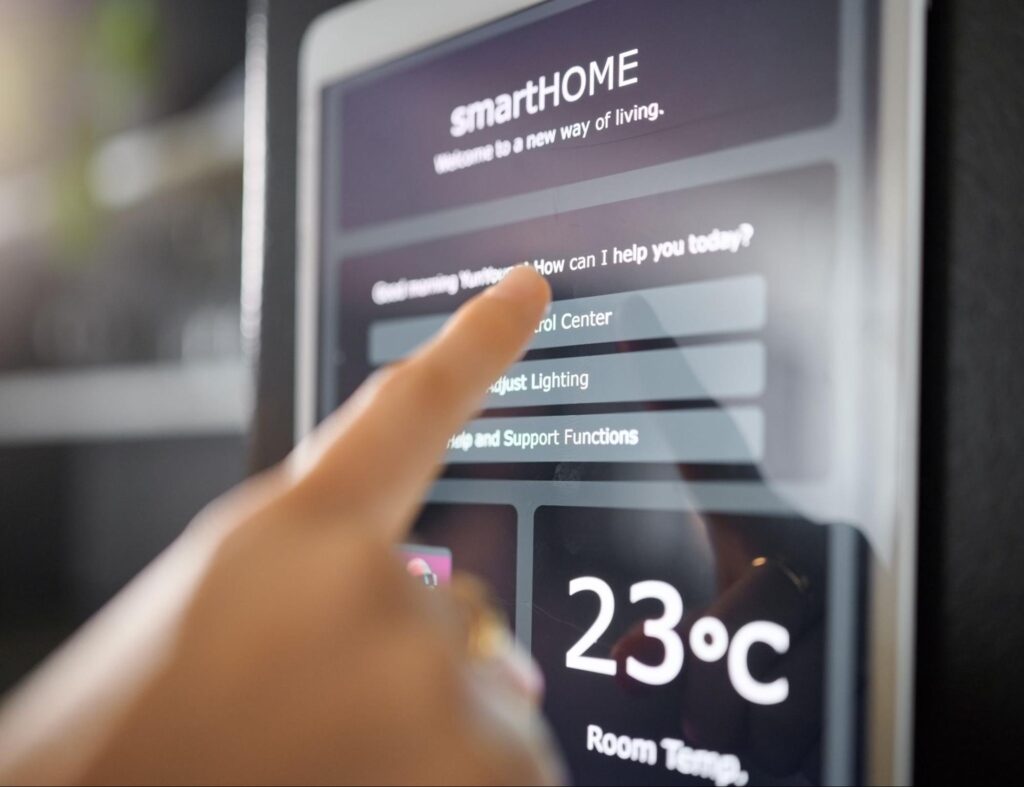
The devices and systems you interact with daily are the final layer of in-home energy management.
10. ENERGY STAR® Certified Appliances
Appliances meeting rigorous ENERGY STAR® efficiency standards can significantly reduce electricity and water usage. Upgrading a refrigerator, dishwasher, or washing machine is a smart choice for long-term savings and performance.
11. High-Efficiency Lighting Systems
According to the U.S. Department of Energy, LED bulbs use up to 90% less energy and last 25 times longer than incandescent bulbs. Pairing LEDs with controls like dimmers and motion sensors further enhances efficiency by ensuring lights are only used when necessary.
12. Integrated Smart Home Energy Management
A fully integrated smart home system connects your lighting, HVAC, and appliances into a single control platform. These systems allow you to monitor energy use in real-time, automate schedules, and identify inefficiencies, ensuring every component works together for optimal performance with minimal energy consumption.
Pillar 5: Sustainable Power and Materials
For the ultimate in energy efficiency and environmental responsibility, homeowners can focus on the materials used to build the home and the power it consumes.
13. Renewable Energy Systems
Solar panels harness sunlight to generate clean electricity. While there is an initial investment, available federal and local incentives can significantly offset costs. Pairing solar panels with battery storage systems allows you to store excess power, promoting energy independence from the utility grid.
14. Sustainable and Eco-Friendly Building Materials
Choosing sustainable materials like bamboo, reclaimed wood, or recycled metal reduces a home’s carbon footprint. These materials minimize waste during production and often improve indoor air quality, offering durability and aesthetic appeal for environmentally conscious homeowners.
How Efficiency is Measured with Certifications
How can you be sure a home is truly energy-efficient? Third-party certification programs provide a reliable benchmark. When looking for a new home, ask your builder about these common standards:
- ENERGY STAR® Certified Homes: This is a widely recognized standard from the U.S. EPA. These homes are designed and verified to be at least 10% more efficient than homes built to the standard building code.
- The HERS® Index: The Home Energy Rating System (HERS) Index is the industry standard for measuring a home’s energy performance. A lower score is better. A standard new home scores 100, while a net-zero energy home (one that produces as much energy as it consumes) scores 0. A home with a HERS score of 60, for example, is 40% more efficient than a standard new home.
- LEED® for Homes: Leadership in Energy and Environmental Design (LEED) is a comprehensive system that rates the overall sustainability of a home, including energy efficiency, water conservation, and the use of sustainable materials.”
Building a Future-Ready, Energy-Efficient Home
Energy-efficient homes offer more than just lower utility bills—they provide a path to a sustainable and modern lifestyle. By focusing on the five pillars of design, from the building envelope to sustainable materials, you create a home that is not only environmentally responsible but also healthier, quieter, and more comfortable to live in.
Ultimately, these features—often verified by certifications like ENERGY STAR® or a low HERS® Index score—combine to create a future-ready home that is cheaper to operate and a more valuable asset when it comes time to sell. Remember to explore the many local and federal incentives, such as tax credits and rebates, which can make these upgrades even more accessible.
At Value Built Homes, we specialize in constructing affordable, site-built homes that are optimized for energy efficiency. Our simplified floor plans and efficient building processes ensure that your new home not only meets your lifestyle needs but also aligns with a commitment to sustainability.
Ready to create an energy-efficient, stress-free home? Contact Value Built Homes today to start building a future-ready home that delivers comfort, savings, and eco-friendly living.

